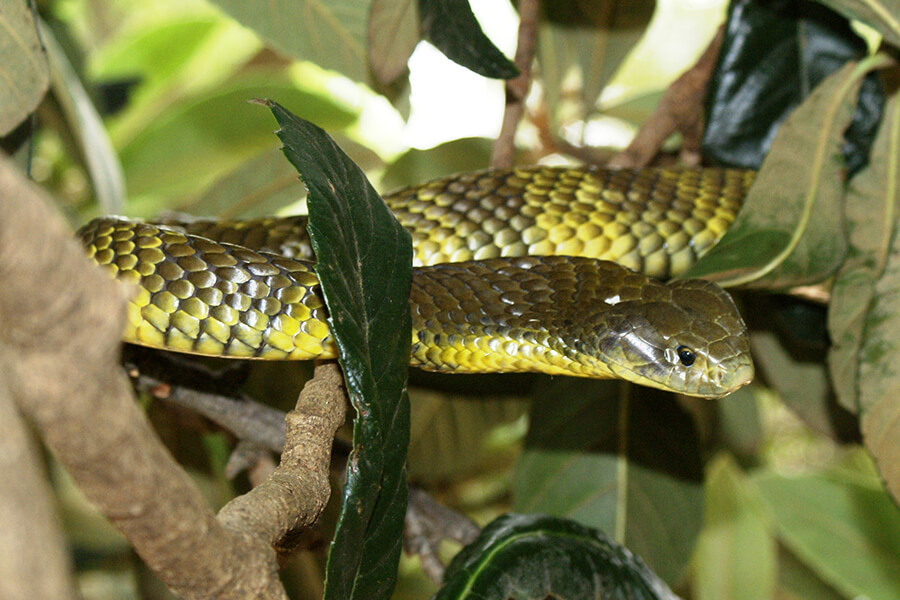Introduction
Australia, a land of diverse wildlife, is home to several fascinating creatures, consisting of snakes that can influence both awe and fear. Amongst these serpents is the tiger serpent, understood for its striking look and credibility as a venomous killer. Because of this, one concern frequently emerges: Are tiger snakes venomous? This article will look into the misconceptions and truths bordering tiger snakes, their habitat, behavior, clinical implications of their bites, and much more.
Are Tiger Snakes Venomous?
When it comes to the question of whether tiger serpents are venomous, the answer is an unquestionable yes. Tiger snakes (Notechis scutatus) are indeed poisonous and ranking among one of the most harmful snakes in Australia. Their venom has potent neurotoxins that can cause paralysis and even death if not treated quickly.
While deaths from tiger snake attacks have actually ended up being less common as a result of developments in medical treatment and antivenom availability, this does not reduce the demand http://erickgtas044.fotosdefrases.com/snake-bite-first-aid-in-australia-what-local-guidelines-recommend for care when experiencing these reptiles. The prospective results of a tiger serpent bite consist of serious pain golden crowned snake at the site of the bite, swelling, nausea or vomiting, trouble breathing, and neurological symptoms such as weakness or paralysis.
Types of Tiger Snakes
In Australia, there are numerous recognized subspecies of tiger serpents:
- Eastern Tiger Serpent (Notechis scutatus): Found mainly in southeastern Australia. Tasmanian Tiger Snake (Notechis scutatus): A subspecies found only in Tasmania. Black Tiger Snake: Known for its darker coloration.
Each of these varieties has variations in size and actions but shares similar venom characteristics.
The Environment of Tiger Snakes
Where Do They Live?
Tiger serpents are adaptable creatures found across different habitats throughout Australia. They generally occupy coastal regions but can also be found in wetlands, swamps, waterfronts, and forests. Their choice for moisture-rich settings makes them skilled swimmers; therefore they prosper near water bodies like lakes or marshes.
Geographical Distribution
- Southeastern Coast: Home to Eastern tiger snakes. Tasmania: Controlled by Tasmanian tiger snakes. Northern Regions: Where you may experience much less frequently seen variants.
Habitat Preferences
Tiger snakes favor areas with plentiful cover where they can conceal from killers while searching for victim. They usually search tiny animals, frogs, birds, and even fish-- making them functional seekers within their ecological niche.
The Anatomy of a Tiger Snake
Physical Characteristics
Tiger snakes possess distinct physical characteristics that separate them from various other Australian reptiles:

- Coloration: Normally banded with yellow or light-colored stripes on a dark background. Size: They can mature to 2 meters long; nonetheless, average sizes vary in between 1.2 to 1.5 meters.
The unique coloration offers both as camouflage versus predators and while stalking victim in their natural habitat.
Behavioral Traits
Understanding the behavioral patterns of tiger serpents is important for those living within their geographical array:

- Nocturnal Activity: They are primarily active during the night yet might also quest throughout the day. Defensive Behavior: When endangered, tiger serpents might hiss noisally or flatten their bodies-- a warning sign indicating they really feel cornered.
Tiger Serpent Bite Symptoms
If bitten by a tiger serpent, individuals should expect particular symptoms that show up right after:
Severe local pain Swelling around the bite area Nausea or vomiting Difficulty breathing Neurological signs and symptoms such as muscular tissue weaknessIt's crucial never to underestimate these indicators; instant clinical focus is vital complying with any kind of snake bite incident.

First Aid for Snake Bites
Immediate Actions After a Bite
Knowing exactly how to respond promptly can save lives when taking care of potential snake bites:
Stay tranquility and still-- movement boosts poison spread. Call emergency services immediately. Keep the influenced arm or leg debilitated below heart level. Avoid cutting or drawing out venom; this old partners' tale can aggravate conditions. Remove limited clothing or precious jewelry near the bite site.First Help Set Basics for Serpent Bites
A well-stocked emergency treatment set must include items especially valuable in treating serpent attacks:
|Thing|Objective|| --------------------------------|-----------------------------------------------|| Sterile plasters|To cover injuries|| Disinfectant wipes|To clean up around bite location|| Emergency contact numbers|For quick access during emergencies|| Compression plaster|To aid immobilize influenced arm or leg|
Proper preparation can make all the difference when an emergency strikes.
Fact vs Misconception Concerning Tiger Snakes
Myth 1: All Snakes Are Aggressive
Contrary to common idea, not all serpent species exhibit hostility in the direction of humans. Actually, many prefer to pull away than confront us.
Myth 2: A Bite Always Leads to Death
While deadly attacks do take place-- many thanks mainly to postponed medical care-- the majority of attacks are non-fatal Aggressive Australian snakes if dealt with promptly with antivenom.
Myth 3: You Can Suck Out Venom
This extensively held idea is incorrect; trying to draw out poison just boosts issues instead of easing them!
FAQs
1. Are child tiger snakes a lot more dangerous than adults?
Baby tiger serpents might have less venom than grownups but often provide bites without hesitation due to being even more frightened.
2. How long does it take for signs to appear after a bite?
Symptoms typically appear within minutes however can sometimes take hours depending upon aspects like specific health and wellness conditions.
3. What ought to I do if I see a tiger snake?
Maintain range! Stay clear of prompting it; most encounters end without occurrence if you appreciate their space.
4. Exists an antivenom offered for tiger serpent bites?
Yes! Antivenom exists particularly developed for treating ailments triggered by tiger serpent bites-- it's crucial to seek expert clinical support immediately!
5. Can I maintain a tiger snake as a pet?
Keeping any kind of wild serpent types poses significant threats due mainly to their breeding habits & & dietary demands-- it's finest left in nature!
6. Just how prevalent are snake attacks in Australia?
Australia sees hundreds of snakebite cases yearly; however fatalities have actually reduced substantially thanks largely due boosted understanding & & health care access!
Conclusion
In verdict, recognizing whether "Are Tiger Snakes Venomous?" carries significant implications for individual security when engaging with these fascinating reptiles native to Australia's diverse environments can not be overstated!
Arming ourselves with understanding concerning these creatures-- from their habitats and habits down through reliable emergency treatment techniques-- empowers us toward more secure coexistence along with wild animals while mitigating threats associated with unintentional encounters!
By cultivating education and learning about our environment's details-- not just concentrating only on anxiety-- we lead pathways towards much better admiration & & conservation initiatives benefiting both mankind & & nature alike!